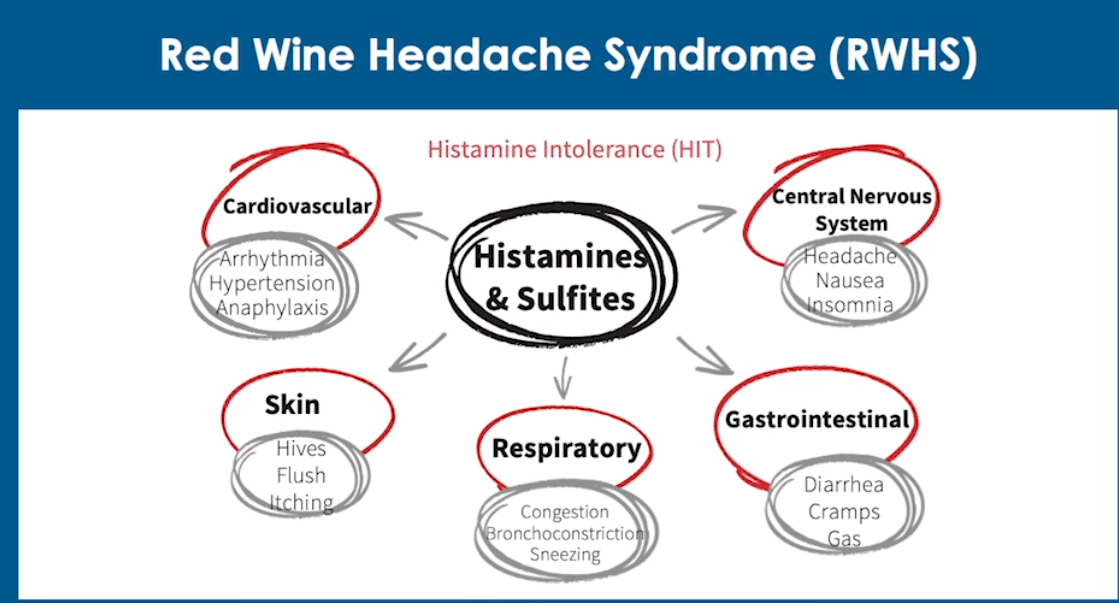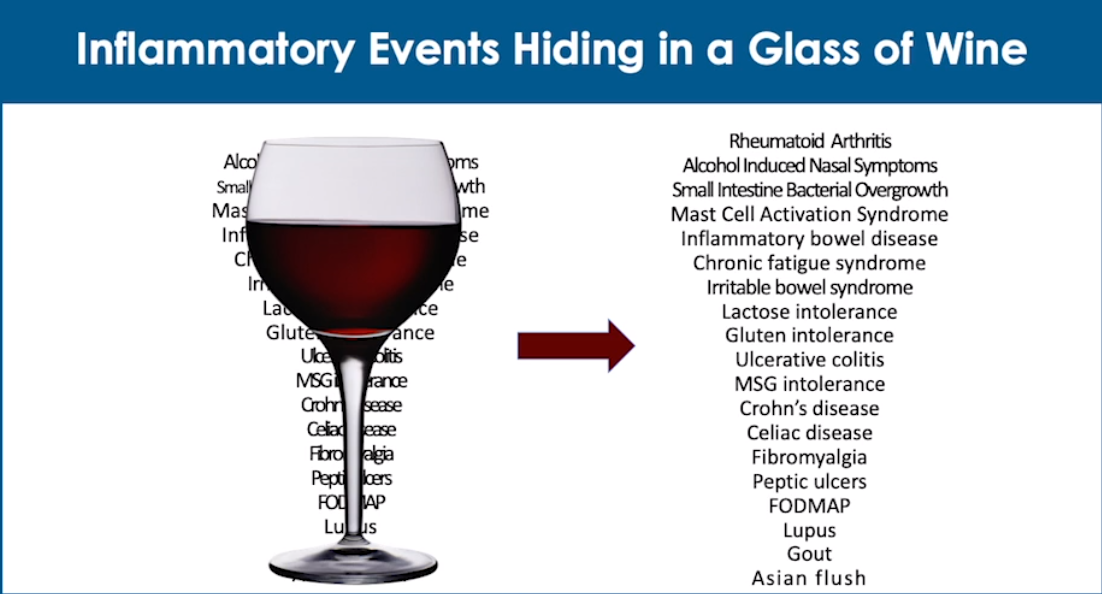Americans love wine, so much that wine consumption has nearly doubled in the past 25 years*.
Personally, I think a nice glass of wine is a perfect accompaniment to a special meal. However, many of us migraine sufferers have experienced unwelcome symptoms from the histamines found in many wines.
Healthier Bodies welcomes valuable insight on this topic from Dr. David Meadows, PhD, CEO and co-founder of Pure Wine Inc., who along with his son, researched and developed “a tool for people who want to preserve some aspects of their social life,” without it taking a toll on their bodies. Their hope is to “give people a sense of recovery, a sense of wholeness,” by bringing back the social and calming aspects of wine.
Essentially, Meadows has explained that histamine is “one compound in a broad class of biogenic amines that trigger allergic reactions and seasonal allergy symptoms.”**
Common symptoms for those sensitive when ingesting histamines can include headaches, flushed skin, and nasal symptoms.
“If you’ve got a grape that has a lot of [histamines] in it when you ferment, you’re going to be at risk,” said Meadows. A natural histamine level is present in the body, but high levels from consumption of various drinks and foods can make it skyrocket – exacerbating unpleasant symptoms, he notes.
Meadows explains that histamines in your diet can also flare up Crohn’s Disease to gout to Irritable Bowel Syndrome, anything that is inflammatory related.
Learn more about histamine intolerance from Dr. Burkhart in this article.

Histamine-rich foods include kitchen staples like bacon, goat cheese, eggplant, kefir, cashews, and tuna. In comparison, histamine-releasing foods include chocolate, strawberries, cow’s milk, and tomatoes. It’s worth taking stock and being mindful of our daily “histamine bucket.”
Due to the hormonal blueprint in women, “they are about 5 to 10 times more likely” to experience histamine intolerance. There is a notable age range when women are more commonly affected as well.
“Estrogen is actually a co-factor for the enzymes that remove that,” says Meadows. “So particularly as women get near midlife / menopause, they pick up a lot of these sensitivities.”
Simply put, any time hormones start “oscillating dramatically,” like when women are pregnant, the problem can worsen. Meadows says that’s because the female body has a harder time removing the histamine enzymes as efficiently.
“Histamines are a trigger, not just for migraines, [but] they are the most common triggers for migraines,” says Meadows. “A multitude of inflammatory events can hide in the glass of wine we sip.”
Especially prominent are “all of the GI ones – because these are really prone to [histamines],” he says, citing Irritable Bowel Syndrome, Fodmap, Crohn’s, fibromyalgia, and mast cell insufficiency. Other health conditions that can be negatively affected by histamines include: chronic fatigue syndrome, Celiac disease, lupus, and peptic ulcers.
White wines have about 5 times as many sulfite preservatives in them compared to red wines. Sulfites are crucial for white wine to have a good shelf life, Meadows emphasizes, “We need it; we need [sulfites].” “Romans were the first to use sulfite-type compounds to preserve their wines,” he notes.
Red wines, on the other hand, have “very little sulfites because they have natural antioxidant properties, and that is the healthy aspect of red wine,” he explains.
The thick-skinned, hot weather durable grapes that create red wines (think Syrah and Cabernet Sauvignon), “have a lot of proteins in them,” he says. And based on the “quality of grape [and] the type of grape,” the biogenic amines levels can be very high, which in turn can trigger migraines.
After experiencing symptoms such as “nasal congestion” and “loss of voice” from wine and knowing that “these were classically symptoms of an [induced] allergy,” Meadows and his son created the PureWine products that are also effective on unfiltered craft beers (IPA, wheat beers). Meadows explains that “these [types of beers] are made out of a different type of yeast,” and like wines “you can end up with quite a few histamines in craft beers.”
We know that wine is popular and that it is widely enjoyed by many. The Wine Institute’s statistics on US wine consumption state that Americans consumed 464 million (total wine gallons) in 1995 compared to a whopping 966 million in 2018.
Ever wondered what the top selling red and white wine varietals are?
The answer is: chardonnay and cabernet sauvignon, per the California Association of Winegrape Growers***
With PureWine’s products, many histamine-sensitive individuals can enjoy wine without the negative side effects. With their products, such as The Wand, the consumer can choose how long to keep the device in a glass of wine to reduce the histamine levels.
Meadows says that a “very sensitive migraine sufferer” may want to leave it in the glass longer, because they “need all the histamines out of there that [they] can.” He explains that the important feature is that his products “remove just the histamines and sulfites and not remove any of the tannins, because the tannins are what give a nice quality wine.” To learn more about his products, visit https://drinkpurewine.com/
Sources:
*https://wineinstitute.org/our-industry/statistics/us-wine-consumption/
Coming next: Managing migraines begins with honesty
If you like to indulge in a glass of wine I hope that PureWine aids your experience!
